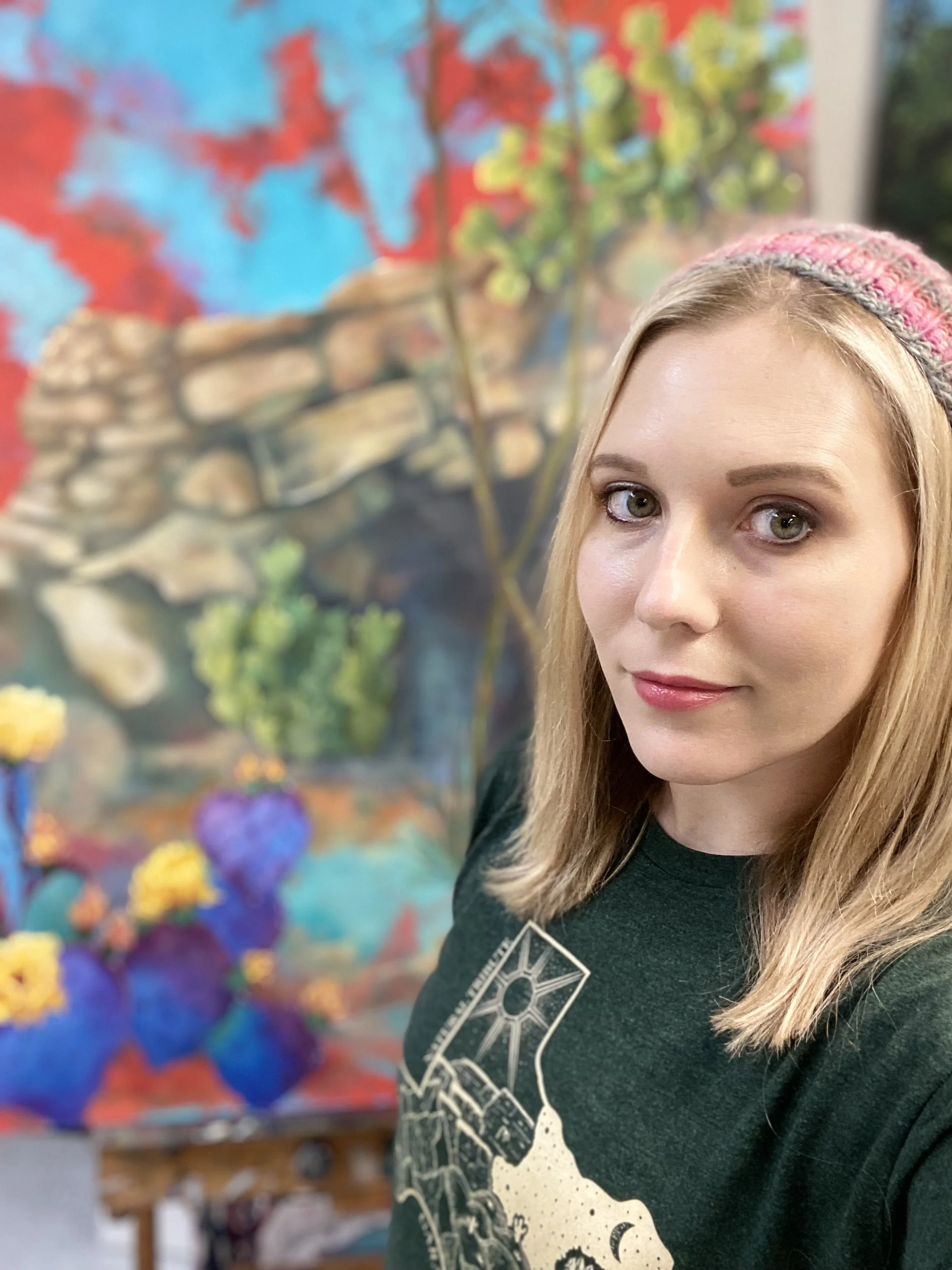So much changes, so quickly. In the past month, I have seen my city burn. I have seen the scars from decades of racism open anew, again and again. I have seen people rise up and felt the pulse of new energy.
I have felt the aching deep in the bones of the highways and the architecture.
Cities are like people: corpus, animus; sacred and profane. The old energy flows through the streets and among the people, embedded in neighborhoods and buildings, it bubbles up as it courses through. I would reflect on this often, when I used to sit in traffic on my way home from teaching in the great before: the arteries of the city are clogged. Less so now, and yet the patterns are worn in. In Dallas, you might get shot by a stranger on the highway. In Dallas you can make new friends just by showing up. We circulate like this, old blood and new.
When I began painting architecture, I fell in love with Dallas in all its ugliness, grit and griminess, and its beautiful/awful history. Dallas is full of little cities. Dallas is an amalgam. Dallas, at times, is schizophrenic. All our streets have personality. State/Thomas. Henderson. Peak. Elm. Cedar Springs. Preston. Beverly. Mockingbird. Lovers. Greenville. Singleton. Hampton. Beckley. Highway 75 bisects the city and bears witness to racial tension when this town was a hotbed of Klan activity, not 100 years ago. People forget. The streets remember. Our citizens are still dying. And in June, the city burned.
“The inferno of the living is not something that will be; if there is one, it is what is already here, the inferno where we live every day, that we form by being together. There are two ways to escape suffering it. The first is easy for many: accept the inferno and become such a part of it that you can no longer see it. The second is risky and demands constant vigilance and apprehension: seek and learn to recognize who and what, in the midst of inferno, are not inferno, then make them endure, give them space.”
Italo Calvino, Invisible Cities
How do we find what is not inferno?
Because there is a lot of love here, amid the plywood and the broken glass. Just as neighbors rallied to support local businesses during the shut down, we rallied again in solidarity. Quickly, local artists mobilized and began creating beauty within the chaos. Small businesses whose windows were shattered during nights of unrest reached out for artwork and messages of unity and hope, and several brave soldiers organized Dallas Army of Artists: an inclusive platform for creatives to volunteer their love for our community.
I am fortunate to have grown up (as an artist) here. The artistic lifeblood of this city is all embracing. When I posted that I would like to help, not only was I given a voice, but I was gifted with materials from local muralists, advice from successful artists, and collaborators who are, like me, working artists and teachers. For two weeks, I drove downtown almost daily to work. While I walked around, the sidewalks simmering, sweat beading on my forehead, I saw the marks made by so many others: marks made for equality, solidarity, life, love. Marks that bear wounds. Marks meant to heal. Marks that demand attention.
All this collectively forms a message of hope.
Cities are like people. They suffer. They need nourishment, spiritual and physical. We tread upon old footsteps here, and there are wounds that go down deep, deep. I have had to leave neighborhood pages due to violence and vitriol. Yet the heart hammers on, and new groups have cropped up as affirmative answers against the fear and bile. How do you counteract the armchair zealots, with their passive outrage? By rolling up your sleeves, my friends, and tending the city’s health. You will know us by the fruit we bear.
The zeitgeist of our city is our collection of sighs. We strain, crack, break sometimes under the pressure… but we also lift each other up, press forward. There are many here who are not inferno.
Cities are like people. They form our experience and shape us, just as we -through compounding action and habit and value- shape them. Our relationship with our city is symbiotic. Why should we care? Because the health of our city impacts our personal health and well being. Sometimes, oh how desperately I wish I could leave Dallas and its smog and its concrete and its bigotry; and then I happen upon a few fireflies as the sun sets over White Rock Lake, and I reflect on who I am as a result of living here. How my friendships and social ties are embedded within me and express themselves in the work of my hands.
Many shout outs: Izk Davies, Juan Galvan, Preston Pannek, Alfonso Apodaca III, Melanie Hardy McVey, Amber Sladovnik, Julia de Leon, Annamarie Ciofani, Misty Amber Moore, Candice Lindsay, Elijah Sala, Amy Sala,Danny Hurley, and many more.
Check out @Dallas Army of Artists and follow artists to show support















